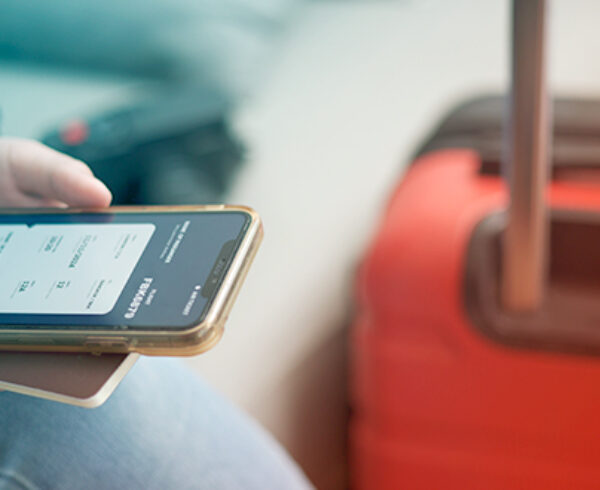How can airlines be more sustainable, and is it even possible? Many airlines are making an effort, and you can do your part, too.
November is Aviation History Month. As such, you might be thinking about your team’s carbon footprint, as well as how aviation impacts that carbon footprint.
While there are many alternatives to air travel, many teams still require air travel to conduct business. Unfortunately, air travel is particularly damaging to the environment. According to Carbon Market Watch, even though it’s well known that flying has the highest environmental impact out of all transportation options, demand for flights continues to grow. In fact, in 2023, air travel emissions in the EU increased by 10%, year over year — not exactly in line with the EU’s broadcasted stand for net zero emissions targets.
The good news is that many airlines are making efforts to be more sustainable. How can airlines be more sustainable, though, when they’re already causing such an impact? It’ll definitely require some significant changes, but those changes are possible.
Here are a few ways airlines are becoming more sustainable, as well as how you can plan for sustainable air travel.

How can airlines be more sustainable?
According to Aviation Benefits Beyond Borders, an initiative of the Geneva-based Air Transport Action Group, air travel has become significantly more sustainable in general over the last decades. For example, since 1990, airlines have halved the amount of fuel they need to use per flight. This means that, likewise, a flight in 2024 generates half the CO2 a flight would generate in 1990. Additionally, since the first jet engines, efficiency has improved by about 90%.
However, there’s no denying that there’s more room for improvement.
One big factor is fuel. Sustainable aviation fuel (SAF) is made from a variety of sources, including waste oil, waste fats, green waste, municipal waste and non-food crops. As the IATA further explains, this fuel is considered sustainable because it recycles CO2 without adding to forest degradation or using up important food crops and water supplies.
SAF has garnered substantial interest in recent years, as Aviation Benefits Beyond Borders notes that it “has great potential for securing the sustainable growth of air travel as it could reduce CO2 emissions by around 80% compared with fossil fuels, without the need to radically change the fuel supply systems or engines of aircraft.”
The IATA further states that sustainable aviation fuel could account for about 65% of the reduction in emissions needed for the industry to meet a 2050 goal of net zero CO2 emissions.
Beyond fuel, new air traffic control techniques and flying patterns could also make flying more sustainable. “Landing using a continuous descent into an airport saves at least 150kg of CO2 per flight. Adding wingtip devices to an aircraft can reduce fuel use by 4%,” reported Aviation Benefits Beyond Borders. Shortening flight times by even just a minute could save more than 100kg of CO2 per flight.
As we covered in a past article from earlier this year, there are several airlines currently taking the initiative to be more sustainable. KLM Royal Dutch Airlines hopes to reduce its total carbon footprint by 15% in 2030. The airline’s Amsterdam hub also operates entirely on sustainable fuel sources. In total, the company currently uses 57 times more biofuel than it did in 2011.
Similarly, Alaska Airlines hopes to achieve net-zero emissions by 2040 through new aircraft and carbon offsetting. Turkish Airlines also began using sustainable aviation fuel in 2022 and has continually expanded its use of such fuels.
What about you?
Beyond asking how airlines can be more sustainable, though, it’s also important to ask how Travel Managers and Travel Management Companies can make Travelers’ air travel more sustainable on a smaller scale. Sometimes, even just the smallest daily choices can make a difference over time and when affecting a large number of Travelers. Here are a few suggestions.
1. Make use of business travel tools that put sustainability first.
Consider using travel management and travel booking tools (or asking your Travel Management Company to provide such tools) that take sustainability into account. Think booking options that show you, front and center, how sustainable your intended bookings are. How will that flight option impact your team’s carbon footprint? If your booking tools automatically feed you that data, it can make the right flight choices easier.
2. Prioritize sustainable partnerships.
Along those lines, choose to partner with companies that make no secret of their sustainability efforts. If you and your team consistently fly with one airline, look for airlines that are making the greatest efforts possible to be more sustainable. Whether that’s through investing in new aircraft, continued use of sustainable aviation fuel, carbon offsetting and/or other efforts.

3. Reconsider that next flight.
At the end of the day, modern flying is still dangerous to the environment, no matter how much carbon offsetting or new aircraft are used. As such, really consider whether that next flight is a necessity.
Can your Travelers take a train or private vehicle? Do they even need to be in person for that meeting at all?
If another option is available, consider taking it, even if it requires a longer travel time or a slightly higher cost.
4. Build a policy around sustainability.
Lastly, begin building up a culture of sustainability within your traveling teams through your policies, hires and mindsets. The more your teams are on board with your organization’s sustainability efforts — when it comes to flying and otherwise — the more likely those efforts are to succeed.
Need more?
For more tips and insights on all things sustainable business travel, check out the JTB Business Travel Waypoint blog.
Need help making your business travel more sustainable? Get in touch today to learn more about JTB Business Travel’s comprehensive suite of services.













